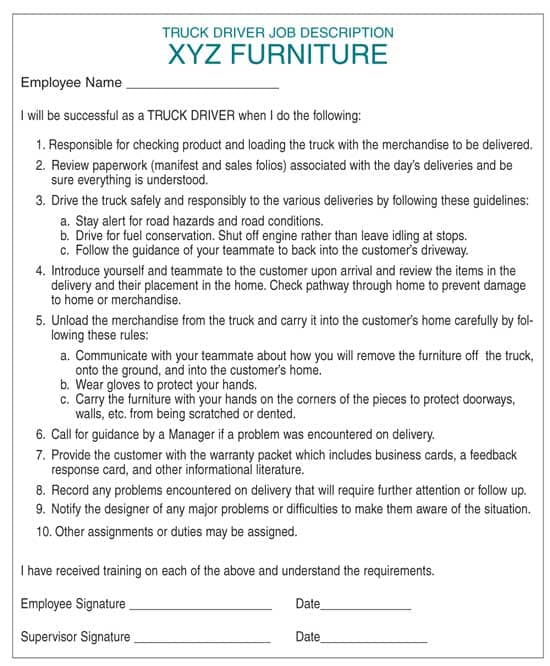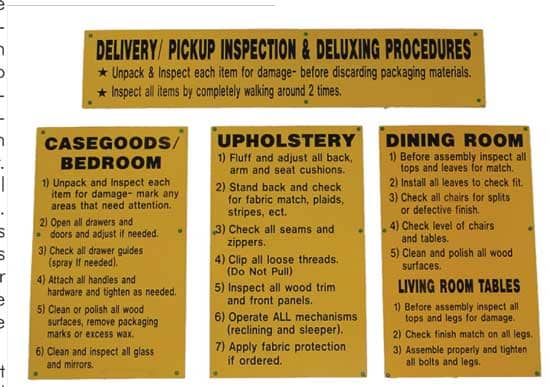Now is the time to look at your delivery systems, in-home service/ sales calls and driver education.
High Performing Furniture Retailers consistently complete 97-plus percent of their deliveries successfully. This figure assumes that problem deliveries are within the control of the operations department, and that they are not held accountable for customer sales errors or hidden manufacturers’ defects. To achieve this high level of customer satisfaction, all previous steps in the supply chain have to be done correctly.
Nevertheless, there will always be some problems. Michael Bowman and his associates at Roomful Express should be commended for their unique same day service approach described in the previous article.
Working to minimize post delivery service calls is critical for maintaining overall customer satisfaction.
One of the key steps to becoming a High Performing Retailer is to recognize the role of the delivery drivers. Making a perfect delivery is the last step in completing a sale, and the first step toward another sale to this customer and her friends through the power of word of mouth advertising. It is your responsibility to provide delivery drivers with appropriate training and tools to do their job professionally.
Most employees want to do a good job and will do so when provided with an easy to understand job description and training. Many furniture retailers have used the job description shown on the following page successfully. You can modify it to fit your specific operation. Limit job descriptions to ten points and one page. If possible, let your employees see a draft, and allow them to comment before the job description is finalized. This will increase their motivation to achieve perfect deliveries.

Note that this format provides signoff for both the employee and supervisor, and becomes part of the employee’s personnel file. It can then be used to coach or as backup for discipline or termination. Obviously the goal is to get every employee to provide uniform quality performance and minimize turnover, a costly and time-consuming process.
Using this approach will reduce stress throughout your organization and largely eliminate customer service hassles that may end up at the Better Business Bureau or on the Internet. And, if you do get negative comments or complaints, make sure you post them, along with your response where they can be seen by all departments so that everyone can work to improve customer satisfaction (see Leslie Carothers’ article “Online Reputation Management” in the July/August 2008 issue of FURNITURE WORLD posted to the furninfo.com website).
To achieve maximum customer satisfaction and profitability, it is necessary as well to prevent problems that arise farther up on the supply chain from getting dumped on the delivery department. It all starts with the salesperson properly completing the order and noting any special conditions such as a third floor walkup or other impediments to getting merchandise into the home. Sales and service staff need to be aware of the consequences of, and made accountable for, clerical errors such as the transposing of a number that can result in receiving the wrong fabric or even a completely different piece. The warehouse staff also has to do all the right things. Every warehouse employee should be supplied with a written job description similar in format to the one shown.

Managers must also show commitment by visiting the shipping dock and looking over the staged furniture. Each sofa, table and mattress that gets loaded on the truck carries with it your reputation. Customers remember their entire customer experience from the greeting through delivery for many years to come.
Daniel Bolger P.E. provides operations consulting services to clients throughout North America. You can contact Dan Bolger at bolger@furninfo.com. For more information on this or other transportation, logistics and furniture warehousing topics, go to www.furninfo.com to read all of Dan’s articles.